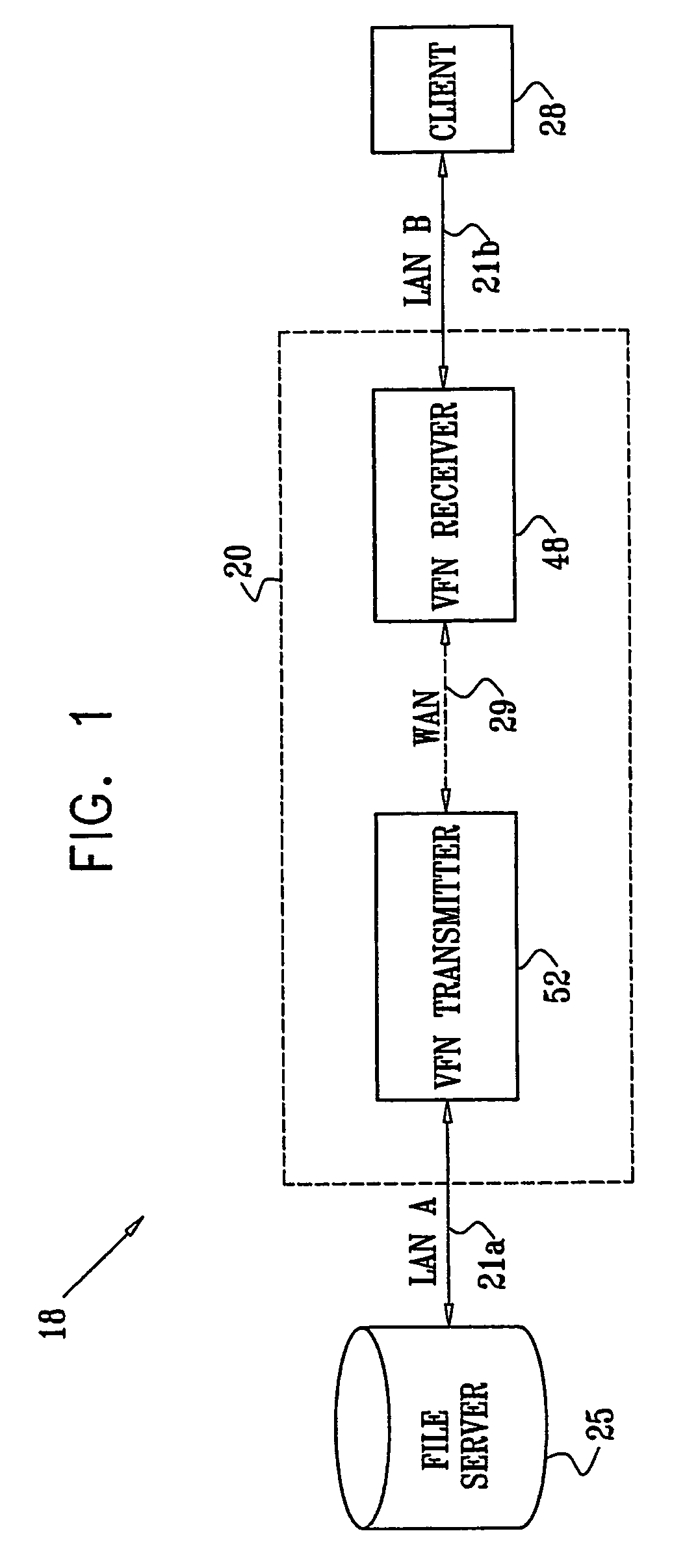Double-proxy remote data access system
a remote data access and remote data technology, applied in the field of computer file systems, can solve the problems of high cost of interconnection, fixed cost for an enterprise, unpredictable bandwidth and latency, and slow file access over wans
- Summary
- Abstract
- Description
- Claims
- Application Information
AI Technical Summary
Benefits of technology
Problems solved by technology
Method used
Image
Examples
Embodiment Construction
[0165]FIG. 1 is a block diagram that schematically illustrates a distributed computer system 18 including a virtual file-sharing network (VFN) system 20, in accordance with a preferred embodiment of the present invention. The distributed computer system includes two or more geographically-remote local area networks (LANs) 21a and 21b, interconnected through a wide area network (WAN) over an interconnection 29. System 18 also includes at least one file server 25, located on LAN 21a, and at least one client 28, located on second LAN 21b. The file server and client may use substantially any distributed file system known in the art, such as NFS, CIFS, or other file systems mentioned in the Background of the Invention.
[0166]VFN system 20 comprises at least one VFN transmitter 52 connected to file server 25 over LAN 21a, and at least one VFN receiver 48 connected to client 28 over LAN 21b. The VFN transmitter and VFN receiver communicate with one another over interconnection 29 provided b...
PUM
 Login to View More
Login to View More Abstract
Description
Claims
Application Information
 Login to View More
Login to View More - R&D
- Intellectual Property
- Life Sciences
- Materials
- Tech Scout
- Unparalleled Data Quality
- Higher Quality Content
- 60% Fewer Hallucinations
Browse by: Latest US Patents, China's latest patents, Technical Efficacy Thesaurus, Application Domain, Technology Topic, Popular Technical Reports.
© 2025 PatSnap. All rights reserved.Legal|Privacy policy|Modern Slavery Act Transparency Statement|Sitemap|About US| Contact US: help@patsnap.com



